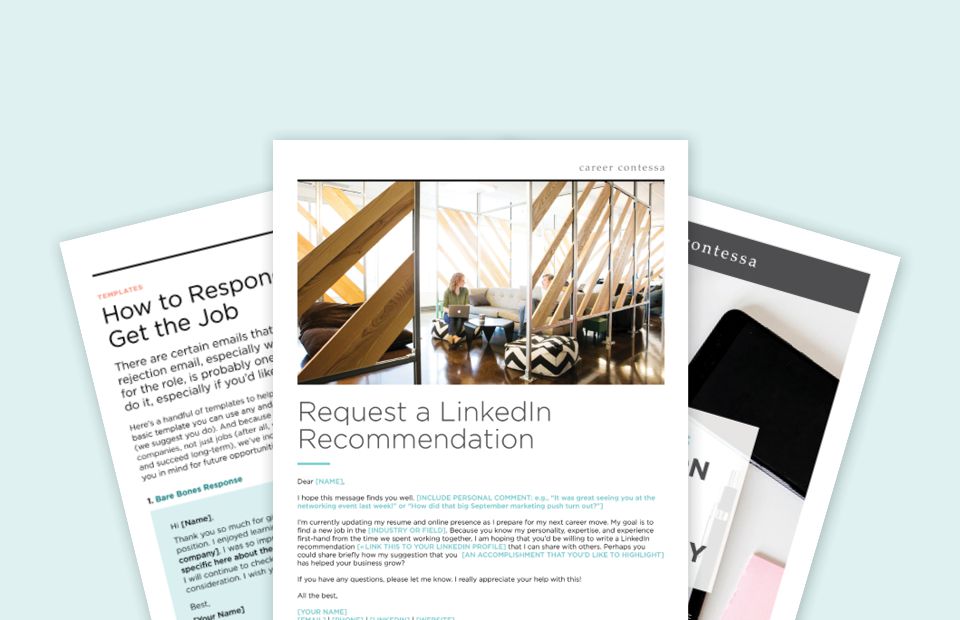This article is sponsored by ZipRecruiter, the #1 hiring site, where over 135 million job seekers have come for their job search needs.
Anyone looking to advance their career should have a great elevator pitch ready.
The internet is full of articles on how to craft a perfect elevator pitch (like
this article from
ZipRecruiter). Still, there’s an element that doesn’t get addressed nearly enough: no matter how much you prepare, there’s an art to the delivery, one that can't be memorized or typed out.
Acing a pitch isn’t just about the words you assemble. It’s about how you read the room and the other person’s responses, adapt when things don’t go as expected, and sometimes, it’s just knowing when you have to wing it.
Striking a balance between being prepared and being yourself can mean the difference between awkwardly slinking off or leaving them thinking about what you have to offer long after those metaphorical elevator doors shut behind you.
In this article, we'll unlock what makes a great elevator pitch, how to write an elevator pitch that communicates your passion and mission, and (perhaps most importantly) what you can leave out of your elevator pitch to keep your audience inspired....and thirsty to learn more about what you can offer!
What Is An Elevator Pitch?
An elevator pitch is a short, succinct explanation of your career progress, your career goals, and your value proposition. Elevator pitches are often used by job seekers looking for new career opportunities, by salespeople making a sales pitch, or by founders and entrepreneurs looking to land investments for their new business ideas.
No matter why you're building an elevator pitch, the formula for writing and delivering an effective elevator pitch in a short time will remain the same.
How Long Should an Elevator Pitch Be?
An elevator pitch should last only about as long as an elevator ride, which is thirty seconds.
If that sounds too short, watch a commercial or two. 30-second increments of time can allow you to communicate the key elements of your pitch, without getting bogged down in tricky jargon or boring details.
- A slower and deliberate speaker can deliver about 60 words in thirty seconds.
- A medium-paced speaker can deliver about 75 words in thirty seconds, so aim to keep your elevator pitch around this length.
- Fast speakers can fit about 85 words in thirty seconds, so if fast is your style, you might be able to squeeze this many words into your elevator speech.
The best elevator pitches are designed to be edited down to include only the most informational key points.
What Should I Include in My Elevator Pitch?
- Introduce yourself. If you’re a recent graduate, tell the person your major and school or if you’ve been working, your current position and your employer.
- Speak about what makes you unique. This could be an internship or your volunteer experience – whatever it is that makes you stand out from your peers.
- Tailor your speech to the position and company. If you’re using it at an interview. You should state your career goal and make sure it reflects the job you’re currently pursuing. Don’t tell the interviewer a job goal that’s not available at that business.
- Resist using industry terms. Jargon doesn’t impress experienced professionals. They’d prefer you kept your language clear and concise.
- End strong. You don’t want your speech to taper off and leave the listener unsure whether you’re finished or not. Make sure you’ve practiced a strong conclusion.
- Prepare a few versions. Have your speech ready at any time. You may have two different pitches depending on the type of person you meet and what position he or she is in.
- Practice your speech out loud. You don’t want to have to think about your pitch as you’re making it. It should come across naturally.
- Practice your speech in front of others. You may think you have the perfect introduction, but colleagues, career counselors and friends may disagree. Give your pitch to a few people and ask them how it could be stronger.
- Practice your body language. Your body language while you deliver your speech is just as important as the words you say. Make sure you offer a firm handshake and keep eye contact with the person.
Use these tips when pitching yourself for a new job. If you're looking for a new job, head over to ZipRecruiter, where there are over 12 million active posts to search!
While every elevator pitch has a slightly different goal, these elements can (and should) exist in every great elevator pitch.
If you find yourself delivering your elevator pitch in an actual elevator, you'll also want to come prepared with your old-school business card with all relevant contact information.
How to Plan Your Elevator Pitch
While words aren't everything, great delivery indeed starts with preparation.
It might sound counterintuitive, but if you want to spontaneously sell yourself in professional situations, you’ll need to plan and practice everything.
1. Write It All Down
Before writing your elevator pitch, make a few lists detailing your professional and personal experience. You'll use these lists to cobble your elevator pitch together.
We have a great downloadable personal pitch worksheet to help you organize your thoughts. Capture everything you think you might need here. This is the “everything but the kitchen sink” part of the process.
Elevator Pitch Lists to Make:
- My professional experience
- Formative personal experiences (and how they are relative to my career)
- Qualifications and experience
- Interesting facts
- Pain points and solutions
2. Determine Your One Sentence Opener
So you’ve got everything. Great. Now you need to cut almost all of it. Think about how you can distill all that information into a single sentence. Yes, one. This is what you’ll hold onto and use to start any conversation. It's going to serve as your "opener."
How do you get all that you wrote into a one-sentence opener?
Pro Tip: Editing is your friend. If you're starting from scratch, write your shortened elevator pitch on a Post-It note. By physically limiting your space, you’ll have to cut, then cut some more.
Regardless, the goal is to set the situation up so it’s natural for them to ask you a question next. People often think they need to fill every space in that 30-second pitch. But really, the opposite is true. If you give them room, they’re more likely to follow you through to the end.
If they don’t ask you a question, though, you’ll need a Plan B. That brings us to the next step in your prep phase.
3. Turn Your Work Into a Question
Any journalist will tell you that the best way to start a natural dialogue is to ask a question—an interesting one.
Remember how you wrote down a problem you’d like to solve when you started brainstorming? Now’s the time to plan how you'll introduce it to your listener. Jot down some questions you could use to propel your conversation forward. Focusing on a problem is great because it sets you up as the solution (and people love solutions).
Here’s an example we might use to pitch Career Contessa:
“Did you know that one in four people think we’ll be able to time travel before we reach gender equality in the workplace?"
[Insert the person’s response.]
"Well, Career Contessa is a platform dedicated to helping women narrow that gap through resources, courses, interviews, and articles. We want to work with them to find careers that fit their life’s goals and get them paid what they deserve.”
For a person trying to
land a job, an engaging elevator pitch might look like this:
“Do you ever feel like your company is sending out these amazing emails, but no one seems to see them? As an audience development specialist, I’m the person who comes up with strategies to get more people on your email list. In short, I bring more eyeballs to every marketing email you send.”
Come up with a few options and variations. You may prefer one over the other, depending on who you’re talking to. After all, if the goal is to convince them to hire you, you don't want to show how you can solve any problem, you want to prove you can solve their problem.
Once you have all this mapped out, you’re ready for the next step—making it more natural.
If you're looking for a job, check out
ZipRecruiter for millions of open jobs today.
4. Practice Your Elevator Pitch
The way you write is not the way people speak. It’s just a fact. People know when you’re giving them a canned speech. They want to hire a person, not a robot, and they want that person to be someone they enjoy having around who can articulate why her work is important in a relatable, authentic way.
For example, read your resume or your LinkedIn summary out loud. While everything might look great on paper, your work requires a bit of a translation into "normal speak." Say you're in digital marketing—sure, you could list off half a dozen acronyms in one minute, but what is it that you actually do?
What sets you apart from every other digital marketer's KPIs, CPCs, and CTAs? In short. what's your LTV as a potential employee?
Your pitch should be free of industry jargon or awkward phrasing. The best way to do that is to get comfortable talking freely about what you do. Keep it simple, straightforward, and to the point. The more you speak naturally, the shorter your pitch will be.
5. Get Constructive Feedback
Any amount of practice in front of a mirror cannot really prepare you for how another human is going to receive your pitch. Practice your pitch in front of others—and encourage others to give your constructive feedback to make your good elevator pitch...great.
Practice your elevator pitch on your friends, your partner, or even your parents. Ask them a few questions about how you can improve it.
Here are some questions to ask after presenting your pitch:
- After hearing that, what do you think my pitch is?
- If you just met me, do you think I'd made a good first impression with this elevator pitch?
- Is there any part you think I can cut out of this pitch?
- Is there anything confusing that needs further clarification?
- Is there anything interesting I should add?
- What would make you want to follow up on this elevator pitch?
6. Be Less of a Salesperson and More Like a Human
In your final round of editing, make sure to give your pitch humanity.
If you’ve ever dodged persistent marketing emails, you know that feeling. People hate the hard sell. It makes them feel uncomfortable and icky. That’s because we don’t want to be pitched to in the traditional sense—we want to relate and connect.
When meeting someone for the first time, adjust how you explain what you do according to who they are, what might interest them, and how much interest they show.
Have some questions prepared to introduce your work, experience, and notable accomplishments. By encouraging them to respond to a question—rather than just talking at them for thirty seconds—you’re getting them involved. And the best conversations go both ways.
Don’t forget to listen to them when you’re through. If you’re at a networking event, do not give someone your pitch, then walk away without listening to theirs. It happens so much more often than it should. if you want to learn more about how to network effectively, check out this article on
how networking can help you get your next job by
ZipRecruiter.
Take Your Elevator Pitch Out for an Elevator Ride
Let’s say you show up to an interview, or you arrive at a networking event, and you immediately hit it off with a person over something completely unrelated to you or your work. In these cases, we’ll give you some sage advice: do not pitch them—at least not yet!
Instead, let the conversation flow naturally. Talk about previous professors or the panelists you liked. Talk about how much you hated the cafeteria food. There will be a moment when your work comes up, and it will feel easy and good-natured to explain. Wait for it. And consider yourself lucky—you've skipped ahead of the competition, no work required.
Where to Use Your Elevator Pitch
- Networking events
- Industry conventions
- Job fairs
- Meetings with potential investors
- Informational interviews
- Actual elevators (!!!)
Elevator Pitch Examples
Depending on the circumstances of your elevator pitch, your approach will be slightly different.
An individual making an elevator pitch to acquire
a new job or an internship from a potential employer will have a different approach from an entrepreneur looking to appeal to stakeholders for a seed round of funding.
Elevator Pitch to Potential Employer Sample
“Hi, my name is [NAME]. It's great to meet you! I’m a [JOB TITLE] with a special focus in [SPECIAL VALUE PROPOSTION] Along with my [YEARS AND TYPE OF EXPERIENCE] I recently [ACCOMPLISHMENT]. I'd love to connect with you to talk more about [SOLVING PAIN POINT / UNIQUE WAY TO WORK TOGETHER].
Elevator Pitch for Fundraising Sample
Hi, I am [NAME] and my business, [BUSINESS NAME] is [DEFINED OFFERING] to help [DESIGNED AUDIENCE] in [AREA] solve problems related to [PAIN POINTS]. I'd love to tell you more about it. Here is my card!
One Last Tip: Always Follow Up!
A perfect pitch will fall utterly flat if there's no follow-through (and you'd be surprised how often people miss the mark on this). Once you've left a glowing impression on your audience, give them a clear way to reach out to you later. If you meet someone at a networking event, hand them your business card so they can connect with you online.
An elevator pitch may take 30 seconds, but it's what happens after that matters most.
Even if your audience knows how to reach you, you're always responsible for following up. After a job interview, write a thank-you email within 24 hours. The day after a networking event, email any contacts you met or connect with them on LinkedIn. Suggest a coffee date or happy hour. Make sure to close the loop.












